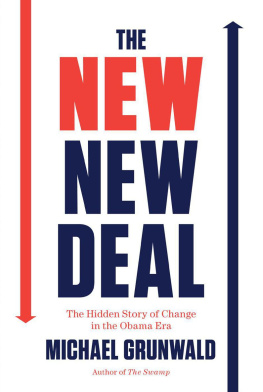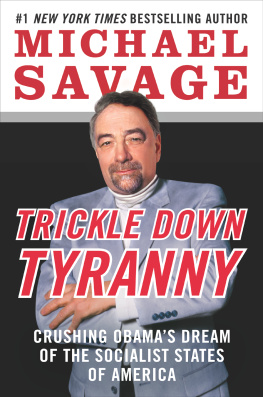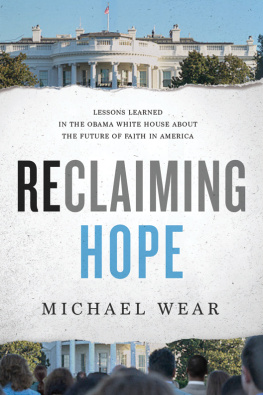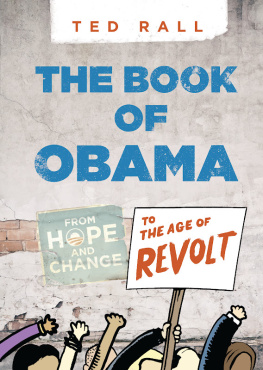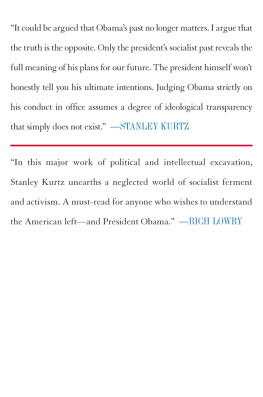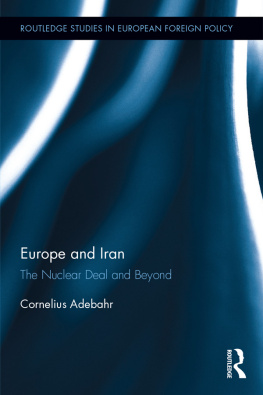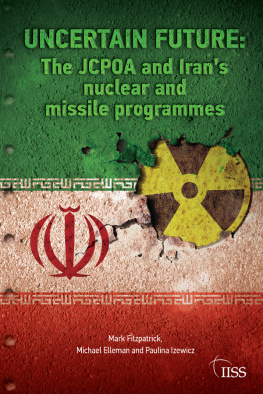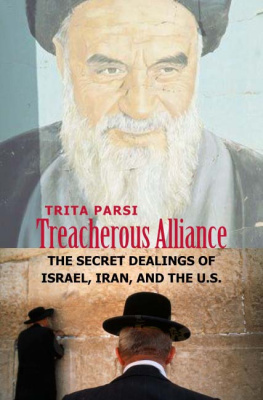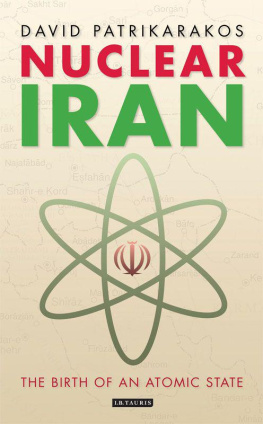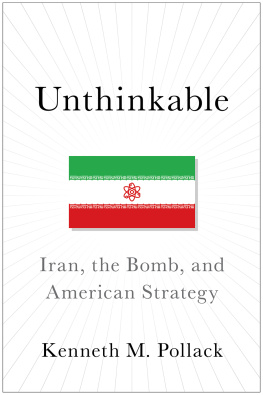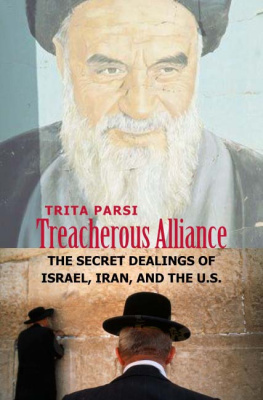Losing an Enemy
Losing an Enemy
Obama, Iran, and the Triumph of Diplomacy
TRITA PARSI

Copyright 2017 by Trita Parsi. All rights reserved.
This book may not be reproduced, in whole or in part, including illustrations, in any form (beyond that copying permitted by Sections 107 and 108 of the U.S. Copyright Law and except by reviewers for the public press), without written permission from the publishers.
Yale University Press books may be purchased in quantity for educational, business, or promotional use. For information, please e-mail sales.press@yale.edu (U.S. office) or sales@yaleup.co.uk (U.K. office).
Set in Minion type by Westchester Publishing Services
Printed in the United States of America
Library of Congress Control Number: 2016963576
ISBN 978-0-300-21816-9
A catalogue record for this book is available from the British Library.
This paper meets the requirements of ANSI/NISO Z39.48-1992
(Permanence of Paper).
10 9 8 7 6 5 4 3 2 1
To the memory of my friend and teacher,
Ruhi Ramazani
Contents
Preface
Blessed are the peace makers.
Jesus of Nazareth, ca. AD 30
This book is focused on geopolitics and foreign policy and, more specifically, on how the leaders of Iran, the United States, the United Kingdom, France, Germany, Russia, and China avoided the twin dangers of war and a nuclear-armed Iran. Its the triangular story of an intertwined geopolitical battle primarily among the United States, Israel, and Iran. The security interests of the United States and Israel, which never fully coincided, increasingly diverged after the 2003 Iraq war, while the enmity of the United States and Iran was never complete either. The book seeks to document and explain how domestic and geopolitical factorsas well as luckmade diplomacy possible, and how the diplomats and negotiators made the nuclear deal achievable. It analyzes the decisions of the governments and actors involved, as well as factors that impacted the decision-making process, such as lack of information, mistrust of the other sides intentions, and domestic constraints on foreign policy maneuverability. Earlier chapters of the book are based on my two previous books on this matter, Treacherous Alliance: The Secret Dealings of Israel, Iran, and the United States, and A Single Roll of the Dice: Obamas Diplomacy with Iran, which explained the foundation for the geopolitical rivalry and documented the many missed chances to resolve tensions diplomatically, including over Irans nuclear program. This book is in many ways the third part of a trilogy, and shows not only how the United States and Iran resolved the nuclear crisis, but also how the American policy of containing Iran and establishing a Middle East order without Irans inclusionwhich is at the center of the geopolitical tensionsfinally came to an end.
This book is based predominantly on primary sources, that is, interviews with decision-makers from the United States, the European Union, Russia, Israel, and Iran. For the chapter dealing specifically with the nuclear negotiations after 2010, more than seventy interviews were conducted with top government officials and the actual negotiators, as well as with outside actors in Washington, DC, who were aiding President Obamas diplomatic strategy. Their accounts of the events have been cross-checked. Where information comes from just one or two testimonies, it is accompanied by appropriate caveats. The interviewees were selected on the basis of their direct role in the negotiations or in planning them.
Much of the book also comes from my personal observations as a witness and a minor actor in the process. As the president of the National Iranian American Council and a longtime advocate of diplomacy, I was consulted and briefed by the U.S. government throughout the negotiations and in their aftermath. Simultaneously, I maintained a close dialogue with the Iranian negotiators to better understand their perspective. It wasnt unusual for me to attend a briefing at the White House a few days before a round of negotiations and then have a two-hour conversation with the Iranian foreign minister in his private hotel room in the midst of the negotiations a few days later. My access to top decision-makers on both sides gave me a unique perspective, which I have tried to use to enrich this book and its analysis. Secondary sources, such as the writings of other analysts and news items, have also been utilized. The news items are primarily from English-language sources as well as from Iranian newspapers written in Persian.
Although it is not possible to list all the officials interviewed (and a number of them preferred to remain anonymous), some should be mentioned. Secretary of State John Kerry, Deputy Secretary of State William Burns, Deputy National Security Advisor Ben Rhodes, lead negotiator Wendy Sherman, as well as other key players in the U.S. negotiating team such as Jake Sullivan, Richard Nephew, and Rob Malley, among others, provided invaluable insights into the Obama administrations thinking and strategic considerations in regard to the negotiations as well as the broader geopolitical situation. Concerning the efforts to secure the deal in Congress, I am very grateful for the perspectives of Senators Tim Kaine and Dick Durbin and House members Nancy Pelosi, Jan Schakowsky, Keith Ellison, and David Price.
On the Iranian side, Foreign Minister Javad Zarif was enormously generous with his time and insights, as were Mohammad Nahavandian, President Hassan Rouhanis chief of staff, and Deputy Foreign Minister Majid Ravanchi. In addition, the high representative of the European Union for foreign affairs and security policy, Federica Mogherini, Frances ambassador to the United States, Grard Araud, Britains ambassador to the United States, Peter Westmacott, Germanys ambassador to the United States, Peter Wittig, and Russias deputy foreign minister, Sergey Ryabkov, provided contexts for and insights into the views and calculations of the other key players in these historic events.
The book begins with a geopolitical scene setter. gives an inside account of the subsequent fight in Congress where opponents of diplomacy made their last stand against Obamas nuclear deal.
The last chapter of the book analyzes why diplomacy succeeded and what we can learn from this episode in order to better use this tool of statecraft to resolve future international conflicts. It also provides a forward-thinking consideration of the threats to the durability of the nuclear deal, as well as asking whether the deal will enable the United States to lose an enemy in the Middle Eastor whether the positive gains in U.S.-Iran relations will eventually be lost.
Acknowledgments
This project would never have been completed had it not been for the help and assistance of countless friends and colleagues. There is not enough room here to thank everyone who deserves credit, nor can I thank enough the ones I do mention. I would like to thank my agent, Deborah Grosvenor, for the invaluable help she has provided, and Chris Rogers and Seth Ditchik at Yale University Press for their patience and persistence. Stephen Heintz and the Rockefeller Brothers Fund offered generous support for the research behind the book. I must also thank the many talented research assistants who provided vital help in editing, information gathering, and research. I wish to thank first and foremost Erin Poll, who worked with me almost from the outset of this project and whose assistance went well beyond what was required of her. I also wish to thank Derya Corcor, Leila Gharagozlou, Maria Hardman, Parsa Ghahramani, Behbod Negahban, Sofia Jannati, Chiya Manuchery, Roksana Borzouei, Shervin Vahedi, Emily Salwen, Aylar Banafshe, Joseph Molnar, Karina Bakhshi-Azar, and Christian Jepsen.
Next page

